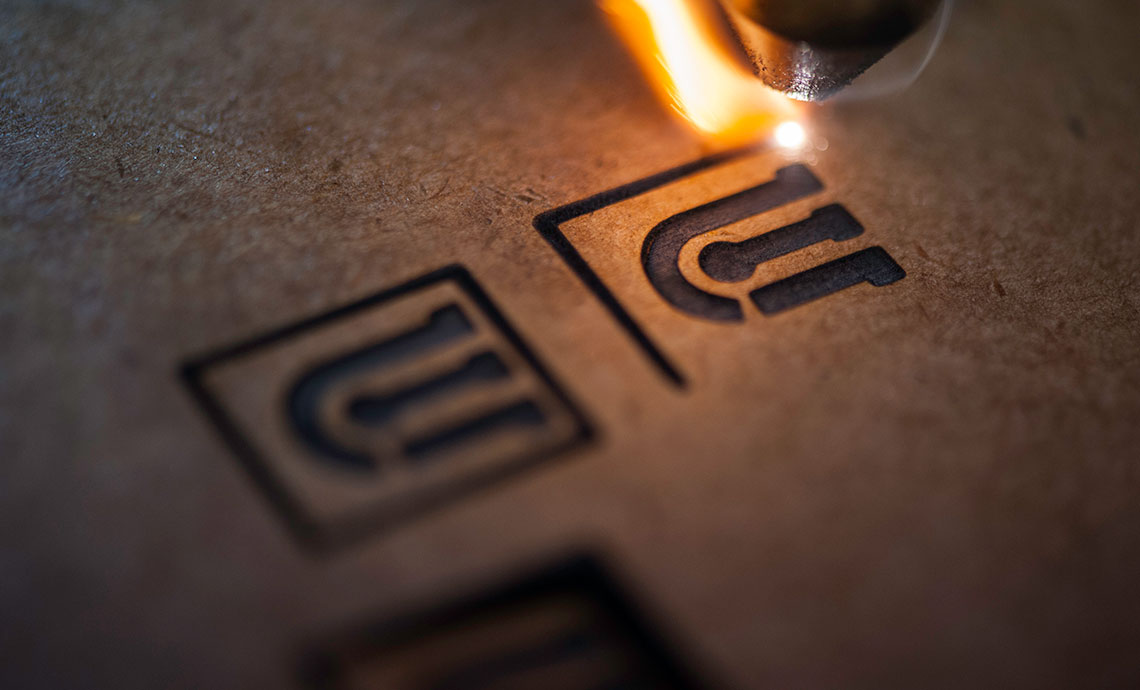A low-cost, user-friendly disposable sensor made of cardboard and containing gold nanoparticles may become a useful tool for monitoring the quality of water consumed by the population. In the final phase of development, the analytical device was designed by a team headed by chemist Thiago Regis Longo Cesar da Paixão of the University of São Paulo’s Institute of Chemistry (IQ-USP) and coordinator of the Laboratory of Electronic Tongues and Chemical Sensors at the same institution. This research, supported by FAPESP, resulted in an article published in early 2023 in the scientific journal Sensors & Diagnostics. The group is preparing a patent application for the manufacturing process.
“Producing inexpensive sensors that can be distributed around Brazil enables real-time monitoring of water supplied to the population. The collated data may guide the formulation of public policies by government agencies and inform the decision-making process for water treatment companies,” notes Paixão. The estimated cost of one of these sensors — subject to confirmation — is R$0.50.
The fabrication process for the device, a small cardboard rectangle measuring 15 millimeters (mm) wide by 20 mm long and 1 mm thick, is practically free of chemical reagents, is commonly used in the manufacture of sensors and is almost fully automated. In addition to cardboard, which can be obtained from a recycling center, researchers used glue, waterproofing spray, and a small amount of gold solution (30 micrograms). The carbon dioxide (CO2) laser applied to the cardboard creates conductive patterns, the basis for the detection electrodes. The gold solution is added to the patterns, and then a new laser is applied to synthesize the gold nanoparticles (see infographic).
“The nanoparticles improve the performance of the device,” explains the researcher. “The sensor takes measurements of electrical current created by an electrochemical reaction on the conductive surface when electrical power is applied. The higher the concentration is of chemical substance to be identified in the water sample placed on the sensor, the stronger the current generated.” To make the device work, -0.2 volts (V) of electrical power needs to be applied to the central electrode — this is less than a small AAA-size battery (1.5 V).
The fact that this material is produced without human handling has several advantages. “Laboratories often go through a series of manual stages to make sensors, which provides little capacity to replicate them. When we resort to machines, such as the one that emits the laser, we avoid this manual intervention in the fabrication process,” explains Paixão.
The chemist Wendell Karlos Tomazelli Coltro, director of the Institute of Chemistry at the Federal University of Goiás (IQ-UFG), who did not participate in the study, agrees. “Laser-based technology is very attractive as it enables production to be scaled with high levels of replication,” he says. Coltro believes that the device presents a high level of innovation. “The USP team was pioneer in proposing the use of lasers to produce cardboard sensors, making the device sustainable and enabling its production anywhere in the world,” he concludes.
In laboratory tests to assess the performance of the sensor, the researchers used sodium hypochlorite as a proof of concept. Chlorine is a substance commonly used to disinfect water in swimming pools, and chlorine at high concentrations may be harmful to human health. The maximum level of free chloride in swimming pools permitted by the World Health Organization (WHO) is between 3 and 5 parts per million (ppm). According to the Sensors & Diagnostics article, a study conducted at the Institute of Chemistry enabled the detection of up to 0.5 ppm sodium hypochlorite in water.
To identify other chemical species in water samples, the platform would have to be adapted — the term “chemical species” refers to the different forms in which chemical substances are found in nature, such as atoms, molecules, and ions. “We have designed sensors to measure toxic metals, pesticides, and pharmaceuticals, as well as other species of environmental interest such as nitrite and nitrate,” says the USP researcher. A specific sensor would need to be projected for each different substance, but it is possible to set up a group of sensors to simultaneously detect the presence of several substances.
For now, only the sensor has been created, but USP researchers state that they have the capacity to design the full system, including the device that reads the data, with no estimated cost. It is also possible to use a portable reader available on the market — something similar to the plastic strips used to measure blood glucose levels — which are inserted into devices known as glucometers.
The next step in the research is to formulate a pilot plan for large-scale testing of the sensor by untrained users in their homes. This will help to refine the device. Going forward, the group intends to identify a company interested in producing the sensor commercially.
“Talks are ongoing,” says Paixão, emphasizing that the quest for cardboard sensors or device arrangements for real-time water quality monitoring is not restricted to Brazil. Startups LAIIER, in London, England; iFlux, in Niel, Belgium; and OmniVis, in San Francisco, USA, are also working on the design of similar apparatuses.
Project
Miniaturized and integrated chemical sensors: New manufacturing platforms for biological, clinical, and environmental applications (nº 18/08782-1); Grant Mechanism Thematic Project; Principal Investigator Mauro Bertotti (USP); Investment R$4,756,859.76.
Scientific article
ARANTES, I. V. S. et al. Laser-induced fabrication of gold nanoparticles onto paper substrates and their application on paper-based electroanalytical devices. Sensors & Diagnostics. vol. 2, pp. 111–21. 2023.
Republish
